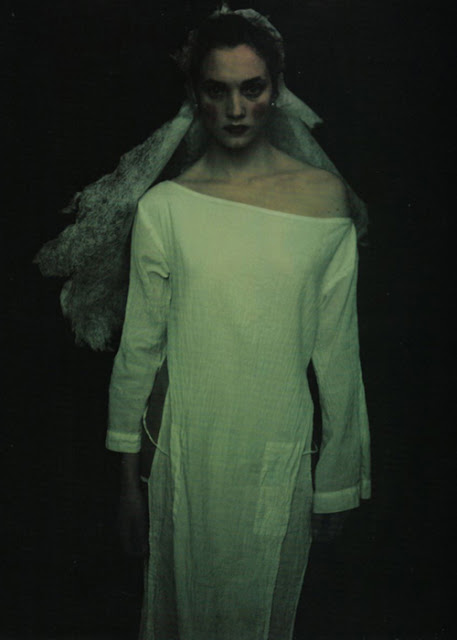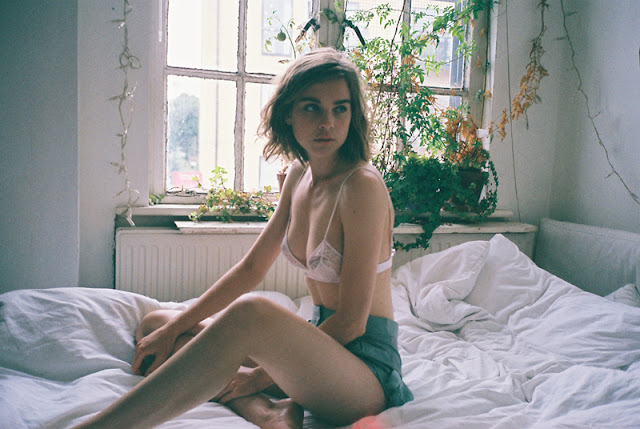WORDS
BY SIGRID (SIGGI) MCCARTHY.
The other day I watched a brief interview with former
editor-in-chief of Vogue Australia, Kirstie Clements. As she was making her way
into a show at Australian fashion week, she was asked a question frequently
posed by those interested in becoming a part of the fashion industry.
“What is the
biggest tip you can give potential interns and employees?”
Her answer reinforced what I had already
suspected, and prompted me to think about the ways in which the fashion
industry is about more than just clothing itself. She acknowledged that one “…obviously
has to have incredible passion and drive”, but that the desire to work for a
fashion magazine should stem from something more than just a love of shopping.
“You have to have a great knowledge of
the arts, and of theatre, and of film, and of a lot of things that surround
fashion, not just clothes…so I would suggest people study and bring more to it
than just ‘I love shopping and fashion’ because it is so much bigger than
that.”
Fashion designers, stylists, magazines
and photographers all seek inspiration somewhere, and so it’s only natural for
the editor-in-chief of a highly regarded fashion magazine to expect her staff
to understand fashion as being more than just items of clothing. After all, fashion
is not an isolated thing - it is inextricably linked to other facets of life
and is both influential and influenced.
Fashion is influenced by all sorts of
outside factors - from obvious influences such as film, literature, art,
theatre, television, dance, celebrity, and music - to more complicated
influences such as politics, history, nostalgia, war, social movements,
religion, people and economics.
In terms of the more obvious influences,
trends of times past often re-emerge when popular culture puts something back
on our radars. Television
shows for example have highlighted the influence popular programs can have on
the fashion industry, by underlining that they are not just about the narrative
and the characters. Styling and costume play an important role in television,
as seen in the critically acclaimed HBO series ‘Mad Men’ styled by Janie
Bryant. This impeccably styled show has no doubt had an influence on the fashion industry over the
past 5 years. The acclaimed show has brought about a strong retro revival and
influenced what seems to be a never-ending array of collections and editorials
inspired by the late 1950s and early 1960s.
This link between on-screen style and
fashion trends can also be seen in feature films. I’m not normally one for
predicting trends, but with the upcoming release of ‘The Great Gatsby’ this
December, I wouldn't be surprised if we started to see more looks that emulate
the opulent fashion styles of the 1920s. This was a decade that saw fashion move away from the rigid Victorian garments / lifestyle, and towards a
more liberal way of dress that had not been seen in previous decades. Ralph Lauren originally designed the costumes for the 1974 film adaptation of 'The Great Gatsby' and then revisited the Roaring 20s for his Spring 2012 collection. The era has also inspired many magazine spreads, including this editorial styled by creative director of American Vogue, Grace Coddington.
Kirstie makes a valid point in saying
that people wanting to work at Vogue should be well read and aware of what is
going on in the world, as each issue of the magazine aims to demonstrate a high
level of understanding when it comes to the fashion industry and also aims to
uphold its overall relevance within society.
Among other things, a fashion magazine
needs to be aware of the story behind a collection, the message designers are
trying to convey, the person or time they’re paying homage to, the boundaries
they're trying to break, the reactions they're trying to provoke, the market
they're trying to appeal to, and even the restraints that are placed upon them
during financial hardship.
It is easy for people to over-simplify
fashion and to dismiss it for being shallow and exclusive, but in reality there
are many elements that engage it with the world as a whole. This engagement has
been demonstrated throughout history and will continue to exist for as long as
people wear clothing.
The 1960s for example was a time of social and political change
both in the US and the UK, and its influence on the fashion industry strongly
demonstrates the well-established relationship fashion has with the rest of the
world. Social movements throughout the decade heavily influenced a change in
fashion, as people were more prepared to take risks with their clothing and
lifestyle choices, and used clothing as a way of expressing themselves. The
emancipation of women at the time was reflected in innovative fashion styles,
most notably through the mini skirt and the bikini, and these women started to see fashion as a tool of empowerment.
As the
decade progressed, and the Vietnam War drew more and more negative attention,
men and women used fashion as a way of rebelling against authority and
highlighting their resistance to conform. Psychedelic prints, tie dyed and hemp clothing, vests, headbands, and unisex garments, among many other fashion styles, were
heavily embedded in the hippie / peace movement of the 1960s and 1970s. Fashion
helped establish this youth movement as a distinct subculture by giving it a
very strong identity – one that was widely recognised and that still influences
fashion today.
Rewinding
in history slightly, you’ll note that fashion has been heavily influenced by the harsh realities
of war and financial hardship. The Great Depression of the 1930s forced people to
wear certain fashion styles and materials, as people had limited resources and had
to think more about the functionality of clothing. During the World
War that followed, certain aspects of fashion were dictated by circumstances
outside of the fashion industry's control. An example of this was when the US government
demanded all nylon for parachutes and other war uses, leaving only cotton and
rayon.
Similarly,
the recent financial crisis lead to the industry rethinking how it
operates, and designers and retailers were forced to create effective
methods to get consumers spending again. This was seen in 2009, when American
Vogue and the CFDA sponsored the global initiative Fashion Night Out. This initiative
aimed to encourage the public to start shopping again and support the international
fashion industry.
There
is no doubt that fashion extends beyond items of clothing and that it has a
strong connection with the world as a whole. Keeping that in mind, it’s easy to
understand why Kirstie emphasised the importance of studying and bringing more
to the editorial table than just ‘I love shopping.’
Now then, I better get back to watching 'Mad Men' for the 4th time... All in the name of research!

















































.jpg)




